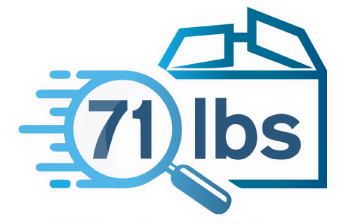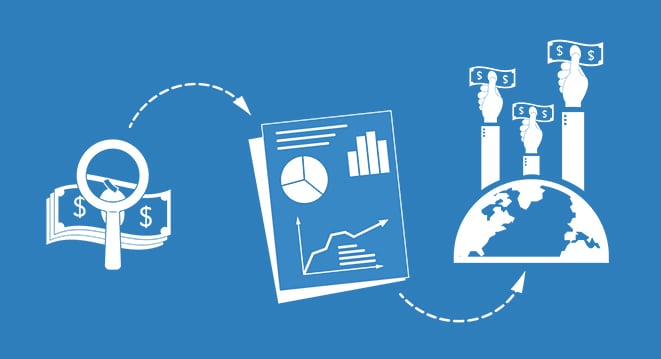Does your business ship freight by air or ocean? If the answer is “yes,” 71lbs can review your shipping logistics to maximize your savings.
The numbers for domestic and international freight shipping are big, and we believe savings for shippers should be the same. 90 percent of the world’s goods are shipped by sea and 70 percent of that is containerized cargo. America is the second-largest importer in the world, having brought in more than $2.5 trillion worth of goods in 2018 with $12.2 billion of those arriving by air.
This means plenty of businesses are using either ocean or air transportation to ship their goods. Whether they’re doing it cost-effectively, however, is another matter. Getting the most out of imports depends on three things: Using the most suitable transportation model, closely monitoring third-party logistics providers (3PLs) and understanding your shipping invoice inside and out.
Air or ocean imports — which best suits your needs?
Big carriers like UPS, FedEx and DHL provide both air and sea options for shippers. Either choice has pros and cons that could negatively or positively impact your bottom line.
Pros and cons of air imports
Air freight comes with the advantage of faster delivery speed, getting imports from points A to B in a matter of days unhindered by land or sea obstacles. Shorter travel times mean potential savings on insurance and item security because quicker delivery trips face fewer transport hazards than longer journeys, and that leads to lower insurance rates.
On the downside, the speed of air travel comes with a higher price tag. Data from World Bank revealed that air freight can be 16 times more expensive to import than by ocean. Planes are also much smaller than ships, sacrificing storage capacity in the region of thousands of tons. Bad weather can also keep flights on the ground, which may stall your imports at a business-critical time.
Pros and cons of ocean imports
Ocean imports charge based on volume rather than weight and can move thousands of tons at a time. This is a big benefit when freight is shipped as an aggregate load. There are two main options for Ocean imports, and they both cost far less than air shipping: Consolidated imports (also called less than container load, or LCL) bring your goods along with goods from other parties, thereby spreading costs among everyone. Full container load (FCL) options are also available for bigger shippers — they offer faster shipping times than consolidated loads but are still far cheaper than air.
The biggest con to sea shipping is the long transit time. Imports can take upwards of a month to arrive, and more time in transit means greater risk of costly damage on the way. Even getting an ocean import underway is a much longer process; vessels typically set off on weekly schedules as they wait for their huge freight capacities to be filled. Ocean shipping is also more vulnerable to customs holdups than the more efficient aerial route.
Is your 3PL helping or hurting your budget?
Whichever import model works best for your business, it pays for shippers to understand the huge role 3PL providers play. Our earlier blog on the topic explained this relationship and the benefits and pitfalls it presents. We can sum it up by saying that whether you choose ocean or air, your business can end up paying for poor carrier performance in both cash and dissatisfied customers.
Poor performance and hidden/unfounded charges can quickly cost a lot. 71lbs is a 3PL watchdog, and we’re already helping more than 5,000 customers hold their carriers accountable and optimize their shipping budgets.
How shippers can save with the 71lbs Import Savings Program
Making sure carriers keep their promises while spotting every possible saving means performing a comprehensive analysis of how your business currently ships and how much you’re paying. As much as 30 percent of shipping-related expenses can be due to surcharges and fees, which aren’t always easy to spot or even understand.
At 71lbs, our expert team roots out savings opportunities and clarifies your shipping costs by analyzing your invoices in 65 different ways. Your business will also benefit from the group buying power that comes from our thousands of customers and partnerships with some of the biggest freight forwarders and 3PL providers in the world, which allow us to provide exclusive saving rates.
As an example, enrollment in our Import Savings Program can save you an average of 15 percent on your usual import expenses. We handle savings hunting while your business focuses 100 percent on staying busy.
At 71lbs, we focus on two things: a) helping customers save money on shipping, and b) helping customers understand their shipping costs. We provide you refunds and savings on shipping insurance, freight and imports, among others. Our automated dashboard displays easy-to-understand shipping costs and insights so you can make better business decisions. Drop by the contact page to get in touch!



